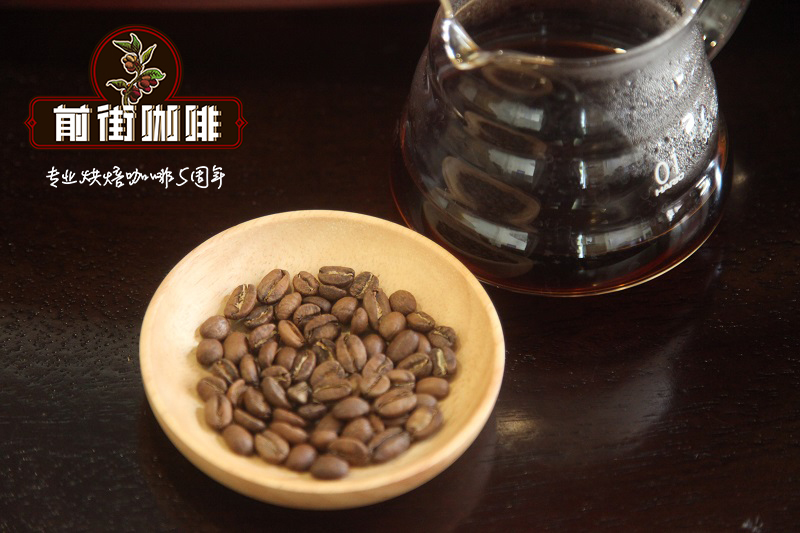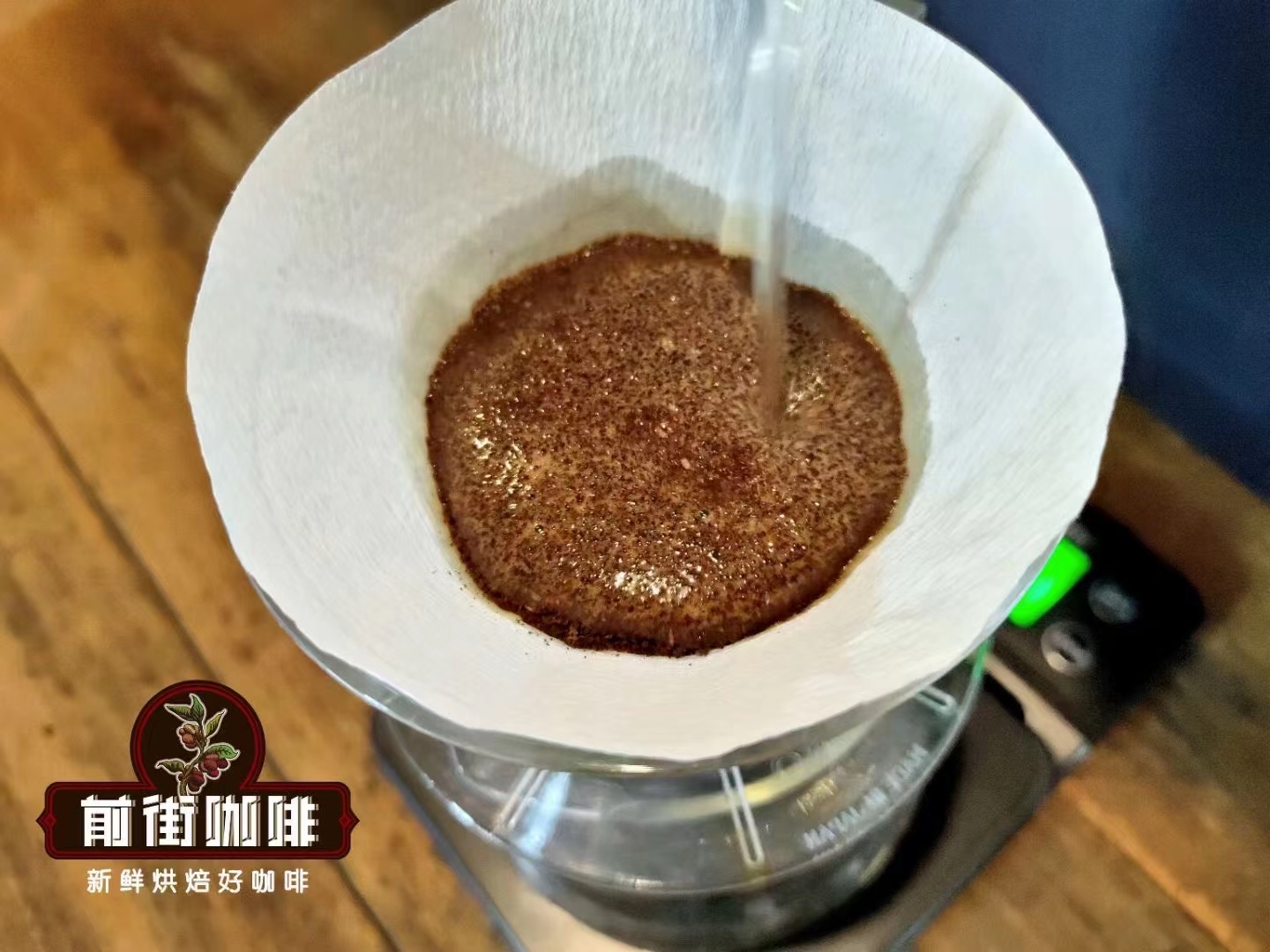What's the difference between Yega Sheffield and Sidamo Coffee?

Professional coffee knowledge exchange More coffee bean information Please pay attention to coffee workshop (Weixin Official Accounts cafe_style)
Many enthusiasts do not distinguish between [Yejia Shefei] and [Sidama] two production areas, both belong to Ethiopia, popularly said Sidama is a province, Yejia Shefei is a town in Sidama province, Sidama elevation 2100 meters, Yejia production area higher elevation, the highest elevation of more than 2600 meters, also much higher than Sidama, we first start from Ethiopia to talk about……
Ethiopia
Ethiopia, located in a country full of magic, Arabica coffee all originated here. The Kaffa Forest is where it all started, and Kaffa is located in southwestern Ethiopia.
Over centuries of natural evolution, Kaffa has bred about 5,000 coffee species. Currently, local communities manage approximately 12,000 hectares of Kaffa wild coffee area. By introducing Participatory Forest Management (PFM), some 4,500 farmers have the right to legally harvest wild coffee cherries and the obligation to protect the forest.
Kaffa is rumored to be the place where coffee was first brewed, and for coffee-goers, it's like the Garden of Eden.
In an area called Bonga in Kaffa, more than 100 Ethiopians are dedicated to growing high-quality Arabica coffee. It has excellent coffee growing environment, with an altitude of 1600-1900 meters, lateritic soil and suitable temperature. The area has high rainfall and is therefore considered one of the wettest areas in Ethiopia. One of Ethiopia's first two biosphere reserves, Gesha is known as a region of Kaffa.
Kaffa coffee (originally Kaffa types) usually includes: Gimbo, Gewata and Chena."
Coffee cultivation in Ethiopia
As Ethiopia changed the division of administrative regions around 1995, the biggest impact on coffee regions was that the original Sidamo Province was divided into the new Sidama Sidama (a small part of the original) and most of it was included in Oromia State. Yegashefi, which originally belonged to Sidamo Province, was now included in the new Gedeo District.
There will be a mixture of new and old regional names in the Ethiopian coffee products circulating in the market. Here, we take the new regional division as the benchmark and combine the administrative regions to understand the coffee planting map of Lower Ethiopia.
Most coffee cultivation of Sidamo coffee beans and Yejia Shefei coffee beans belongs to the pastoral coffee model, that is, coffee farmers grow coffee trees near their living areas, harvest them themselves during harvest season, and then send them to nearby water-dependent processing plants for unified treatment (or centralized purchase by middlemen). Except for a small number of plantation estates that have the strength to plant, pick and process coffee beans independently, coffee beans from many different regions and varieties will be processed centrally by the processing plant and then sent to the auction house for official evaluation and grading.
This is why many Ethiopian coffee beans are named after the processing plant or cooperative, and it is also one of the reasons why the same batch of coffee beans is mixed with multiple coffee varieties, and even the flavor of different batches of coffee beans produced by the same processing plant can be significantly different.
If we want to buy Ethiopian coffee, there are usually 3 channels
:: Farmers 'Cooperative Union (coffee from affiliated cooperatives, smallholder farmers)
● Exporters (intermediaries, sourcing from ECX or local coffee markets)
Large public or private plantations (coffee exporters who produce and sell coffee)
Farmers 'Cooperative Union
In order to facilitate the direct export of farmers 'cooperatives to the outside world, farmers' cooperatives in various places have set up their own cooperative unions. At present, there are 6 farmers 'Cooperative unions in Ethiopia, namely
● Oromia Coffee Farmers Cooperative Union (OCFCU)
● Sidama Coffee Farmers Cooperative Union (SCFCU)
● Yirgacheffe Coffee Farmers Cooperative Union (YCFCU)
● Kafa Forest Coffee Farmers Cooperative Union (KFCFCU)
● Bench Maji Coffee Farmers Cooperative Union (BMCFCU)
● Tepi Coffee Farmers Cooperative Union (TCFCU)
The advantage of cooperative alliance is to unite scattered small farmers with cooperatives to form a large collective, participate in international projects, such as Firetrade, provide a unified export to contact buyers, pay a certain proportion of the harvest to cooperatives, deduct management expenses, reserve part for community development, and pay the rest to small farmers. Small farmers can obtain income more stably and conveniently to meet planting and living expenses. This is why more and more smallholders are willing to join cooperatives.
● Coffee grade of Ethiopia
Grade of raw beans: - Q1 is the highest grade, Q2 is the second
- Common in China, only g1~ g4 classification → Whether washed or sun-dried beans, choose g1 should be able to get less defect rate and delicious coffee beans.
The beans themselves are graded good or bad, and ECX has a further way of classifying them. It is not the familiar "yega-shefi g1" or "yega-shefi g2". Fresh coffee beans harvested in that year must be scored first, and coffee beans with g1~ g3 ratings will be further classified into Q1 and Q2 grades by SCAA cup.
Yega Shefi washed beans
Yega Shefi sun-baked beans
Q1 Highest grade: Coffee beans with a score of g1 or g2 above 80 in the primary grade + a score of 85 or above in the fine grade. The highest grade coffee beans.
Q2 Highest grade: G1 or G2 grade coffee beans in the primary grade +80~ 84.75 grade coffee beans in the fine grade score. It is the second highest grade coffee bean.
● About the two production areas of Yega Shefi and Sidama
These four cultivation systems are distributed in the following nine major production areas in Ethiopia: Kimma, Sidama, Yegashefi, Hara, Limu, Iruba, Kimbi (Lekanti), Tiebi and Bebeka.
Yejia Xuefei (fine production area): altitude 1,800 ~ 2,000 meters| Garden coffee system|
Yegashefi is affiliated with the Sidama region and is separated due to its unique flavor. In addition to the town of Yejia Shefei, it also includes three sub-producing areas around Wenago, Kochere, Gelena and Abaya. Therefore, Yirgacheffe A, Wenago A, Kochere A, Gelena/AbayaA will be more expensive than the namesake B in the new Yergacheffe grading system. In addition to washing and sun exposure, the recently introduced semi-washed Yega Shefi is also worth a try.
Yejia snow Fei body varieties for the local native species, small particle species, relatively round shape, beans are very small, mostly between 14-15 orders,
Sidamo Coffee Bean (Fine Production Area): Altitude 1,400 ~ 2,200 m| Garden coffee system|
The flavor is similar to Yega Sheffi, fine washed or sun-dried Sidama coffee beans, the same flower and orange fragrance, the price is not inferior to Yega Sheffi. The varieties of these two regions are similar, with medium seeds but also small seeds with short plants, which farmers often sell separately. Common Kurmie, poor disease resistance;Wolisho; tall and robust;Deiga, medium tree, these three species are the main force of the fine sun series Biloya and Aretha.
The beans are smaller than Longberry.
There are nearly 2000 coffee varieties recorded in Ethiopia, including 1927 native varieties and 128 introduced varieties. Therefore, if you look at the face value, Ethiopia's coffee variety is "Grand View Garden", which has everything, long, short, thin, fat...
Long particles are found in coffee growing areas all over Ethiopia. From the actual proportion, Jimma in the west, including Limmu and Kaffa, will have more long particle varieties, and Sidama or yirgacheffe will have less proportion.
Small particle species, round in shape, small in size, mostly between 14-15 mesh, this variety should be the most familiar to us, they can often be seen in Sidama and Yejia Shefei, I have also seen in a harrar sample, also seen in Jimma local coffee beans sold, compared to other areas, Sidama and yigracheffe and surrounding arsi, guji have more of this small particle of the original variety planted.
● Flavor
Yerga Sherffy Coffee Bean has a unique jasmine aroma, bright and lively citrus acidity and black tea texture.
Sidamo coffee beans are full of berries and tropical fruit flavours.
Coffee beans and coffee beans
Front Street Coffee Roasts sidamo coffee beans that are fully guaranteed in brand and quality. More importantly, the cost performance is extremely high, a pack of 227 grams, the price is only 98 yuan. According to the calculation of 15 grams of powder per cup of coffee, a pack can make 15 cups of coffee, each cup only costs about 6 yuan, compared with the price of dozens of cups sold in cafes.
Important Notice :
前街咖啡 FrontStreet Coffee has moved to new addredd:
FrontStreet Coffee Address: 315,Donghua East Road,GuangZhou
Tel:020 38364473
- Prev

The technique principle of three-stage water injection of hand-brewed coffee the advantages and disadvantages of three-stage water injection of hand-made coffee
Professional coffee knowledge exchange more coffee bean information please follow the coffee workshop (Wechat official account cafe_style) hand-brewed coffee three-stage water filling method reason and principle? Three-stage injection of hand-brewed coffee? With regard to drip coffee, mastering the ability to control coffee extraction is one of the best and trickiest things. Among them, there are many variables to consider: the grinding of coffee powder.
- Next

How much coffee powder is used to brew coffee by hand and how much water is used by sailors to brew high-quality coffee?
Professional coffee knowledge exchange more coffee bean information please follow the coffee workshop (Wechat official account cafe_style) hand-brewed coffee per person? How to calculate the third stage water injection by hand flushing? Hand-brewing coffee tricks and techniques? Hand-made coffee gouache ratio? Preparation-coffee powder: 26g-hot water: 400g, 9 degrees Celsius
Related
- Detailed explanation of Jadeite planting Land in Panamanian Jadeite Manor introduction to the grading system of Jadeite competitive bidding, Red bid, Green bid and Rose Summer
- Story of Coffee planting in Brenka region of Costa Rica Stonehenge Manor anaerobic heavy honey treatment of flavor mouth
- What's on the barrel of Blue Mountain Coffee beans?
- Can American coffee also pull flowers? How to use hot American style to pull out a good-looking pattern?
- Can you make a cold extract with coffee beans? What is the right proportion for cold-extracted coffee formula?
- Indonesian PWN Gold Mandrine Coffee Origin Features Flavor How to Chong? Mandolin coffee is American.
- A brief introduction to the flavor characteristics of Brazilian yellow bourbon coffee beans
- What is the effect of different water quality on the flavor of cold-extracted coffee? What kind of water is best for brewing coffee?
- Why do you think of Rose Summer whenever you mention Panamanian coffee?
- Introduction to the characteristics of authentic blue mountain coffee bean producing areas? What is the CIB Coffee Authority in Jamaica?

